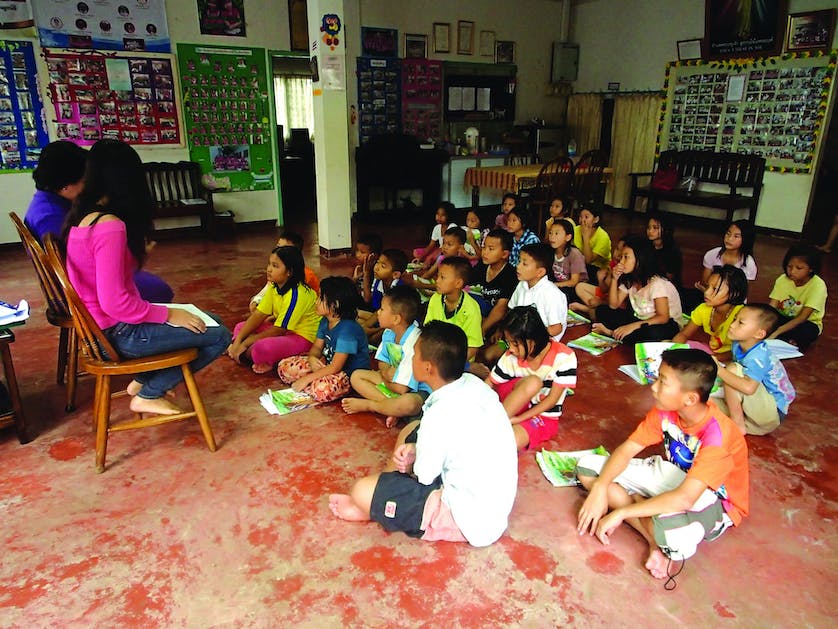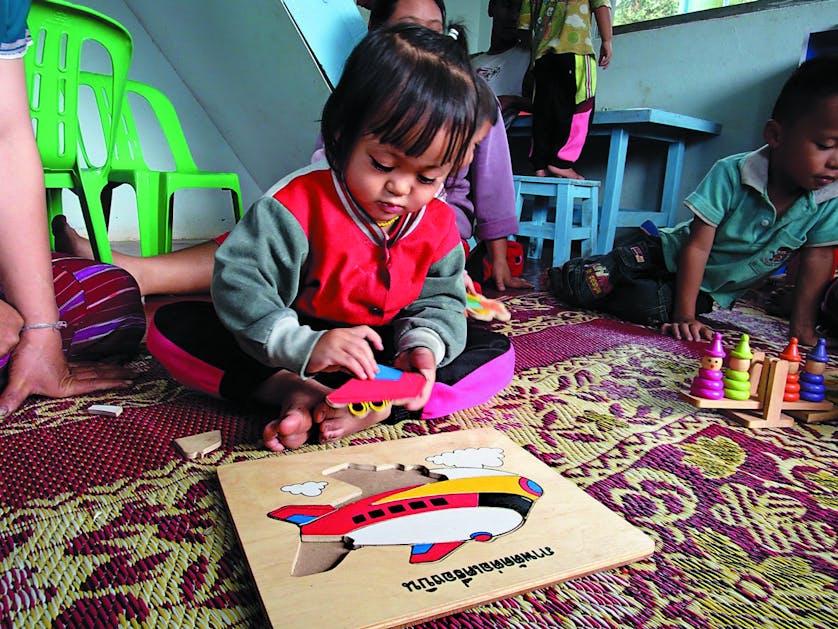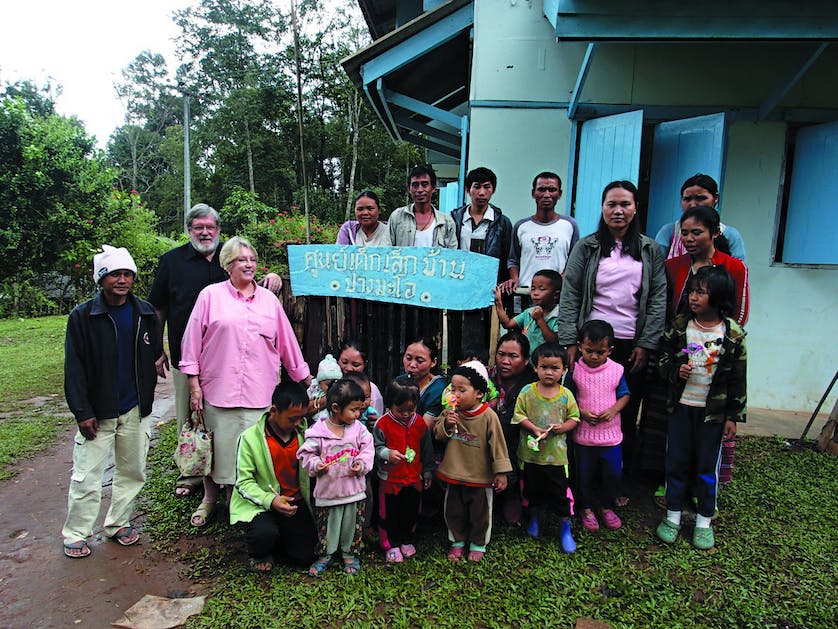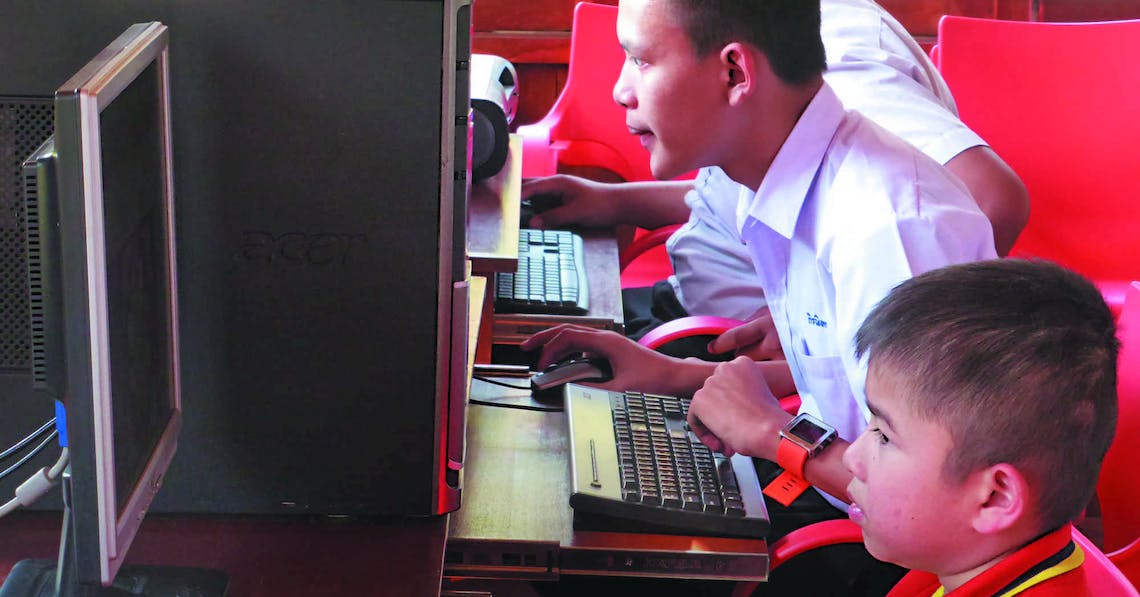It was the middle of Isaan winter, and a bite was still in the air 15 minutes before noon when I told Ae, “No, you may not go outside,” for the third time. The class was loud, and as an English teacher with only two months of experience with these particular students, I had no way to control them. Ae was my loudest student, a “troublemaker” who refused to sit down, to stop hitting his fellows, to pay attention. And now he was asking to leave class early for lunch, as he did every class.
“No, you can wait a little bit. Please come sit down,” I said, turning to speak to the class at large. Ae yelled, opening and closing the door repeatedly until I finally broke.
“Fine, go.” He left with a smile on his face.
It was only later, in the teacher’s office, that my coworker informed me that Ae is learning disabled _ in fact, it turned out, the entire class had some form of learning disability (LD), and none of them could read or write in Thai, let alone English.
I sat, hands clenched in my lap, and asked what kind of disability Ae had. The diagnosis was general trouble with reading and writing in addition to ADHD, to the point where getting the 13-year-old to pay attention for more than a minute was considered a minor miracle. The fact that I was only just being informed of this was the most shocking part, considering I had been at the school going on three months. “Don’t worry,” my Thai coworker assured me. “I have to send him out of class sometimes, too.”
This is a scene too often repeated all over Thailand, as various foreign teachers come to the country to teach English and are confronted with LD students in the classroom and little to no support in teaching them. They ask what measures the school is taking to bolster their educations, and more likely than not the answer is, “Nothing.”

While 2009’s Quality of Life law recognises the existence of LD students and their rights to equal education and access, no measures have been put in place to prepare those with learning disabilities for normal education with their peers. As such, the large majority of schools have no special education materials for those who fall short of the “average” range. Educational institutions that do provide special education are mostly high-income and/or international schools in Bangkok and Chiang Mai, which is little help for children in Thailand’s less populous north and northeast regions.
Tools and textbooks have been provided by the Thai government to measure the IQ of children at every school in order to identify LD and other disabilities. As of 2006, the Thai national average IQ rests at 98 with the lowest-scoring northeast region at an average of 96 IQ points. Children with problems in school are given the test _ those that score lower than average are considered to have some degree of mental retardation, while children that score average or higher are considered to have a learning disorder that hinders their specific capabilities in math, reading, or writing.
Twenty years ago, the northern region of Thailand had the lowest IQ scores.
According to Dr. Samai Sirithongthaworn, Director of Chiang Mai’s Rajanagarindra Institute of Child Development (RICD), improvement in the north is a result of intervention programmes in Chiang Mai and surrounding areas to assist children during key stages of brain development.
“30 percent of Thai children have delayed development before school age,” Dr. Samai tells me after I tour RICD’s facility, the brand new piano-shaped building along Canal Road. He adds that 1.7 percent of Chiang Mai’s overall child population has mental disabilities.

Children under age six fall under the jurisdiction of the Ministry of Public Health, which has many outreach programmes in Chiang Mai. However, after age six, any disabilities fall to the care of the Ministry of Education, which has no laws in place for special education.
“We cannot force them to give care to the children,” Dr. Samai says. “We can only give recommendations.”
According to the Ministry of Public Health, Thailand hosts an estimated four million children with LD nationwide. Something needs to be done. Overall education is suffering under the pressure.
“In Thailand, we are ranking as the worst country in caring, not only for LD, but for normal children too,” Dr. Samai adds.
The RICD has had a huge impact on test scores across Northern Thailand, using what they refer to as the Individual Education Program (IEP), which personalises learning for each student with LD or even autism. LD children are classified by their troubles with reading, writing, and mathematics, then separated according to age groups.
On my tour of the RICD facility, I spoke to special educator Kwanjai Santikul about IEP’s methodology. She informed me that LD children are assigned learning goals according to their age group, and each goal has several knowledge checkpoints. Each child works their way through a workbook at their own individual pace, learning and reinforcing key concepts in reading and writing or mathematics. When the child can grasp and utilise the skills for all the checkpoints in their age group, they are ready to integrate into the standard Thai classroom.
A programme like IEP has huge potential in standard Thai schools around the country, provided they receive the materials necessary to make it happen.
Dr. Brian Doberstyn, Chairman of the Dulabhatorn Foundation, agrees that LD students should be worked with on an individual basis to focus on what they can do, but thinks that children should not be treated only according to their diagnosis. “They want to be challenged…They want to say, ‘I can do it!'” Dr. Doberstyn says. “These kids have so much more potential than ever realised, and we’re trying to…bring out as much of that as possible.”
Dulabhatorn Foundation works specifically with disadvantaged children who have issues with intellectual development, including learning disabilities, ADHD, Down’s syndrome, and autism. They also work with children outside of the regular classroom, grouping them according to ability and interest as opposed to age or diagnosis.
“Your approach should be to treat them as you would any child. They’re going to have feelings, they’re going to have sensitivities, they’re going to have fears just like any child has,” says Marianne Doberstyn, Dr. Doberstyn’s sister and general secretary of the foundation. “Do you really want to have a preconceived idea of what to expect? You don’t want to have any biases.”

I tell Dr. Doberstyn about my experiences in the Thai classroom. Nearly a third of my 700 students in Isaan have some form of developmental disability, and all are integrated into the regular classroom, receiving no extra time or help from the teachers or administration. The whole session comes down to one question: “How can we help them?”
“It’s all in the attitude of people who are doing things… They have to be interested in doing it. The schools here? Teachers don’t give a damn. Special education classrooms are just a place to keep kids that are difficult for one reason or another,” Dr. Doberstyn sighs. “In Nong Pheung…the caregivers _ they call them babysitters _ they change every couple months. What they do, their idea is to keep these kids quiet, put them in front of the television or in front of the computer with YouTube or something.”
Marianne nods. “You’re fighting their traditional method, which is somebody stands in front and tells them and then they memorise,” she says. “It’s such a different approach which is centred on the child and not on the teacher. You’d have to start with a new teacher. I don’t think an experienced teacher would ever be able to make such a radical change.”
I ask them what could be done by teachers working now.
“There are simple things that can be done…and simple choices that a child could make in a classroom and right now I don’t see that they have any choices at all. It could be a choice of two things, which would you like to do: this or this?” Marianne replies. “Or working independently or working in small groups with their friends, not just everybody sitting down in front of the teacher. But it would be so alien to any teacher here _ I think it would be difficult,” she says.
Both Doberstyns emphasise that it’s not the teaching of LD students that’s difficult; RICD’s success with the Individual Education Program is proof enough of that. The biggest problem with Thailand’s current approach (or lack of) toward LD students is that they’re not encouraged to reach beyond what little they’ve been told they can do. “There’s just no stimulation, no stimulation of curiosity or no real desire,” Dr. Doberstyn says. “I think it’ll change, but it’ll take a lot of time.”
I think back to Ae in that small Isaan classroom. In the classes following my revelation, I have tried to exercise much more patience than before, shortening lecture time to a perfunctory ten minutes before moving on to games or art activities. My students have responded well, becoming more diligent in note-taking and calmer over the course of the lesson. Ae in particular has become more willing to sit in one place, even answering questions, volunteering to pass out papers, and other small tasks. Sometimes this is the best we can do, as teachers. A little understanding goes a long way.
“These kids live in such a small, small world. What they know is their home and their school,” Marianne adds. “We need to do something to expand their world, and I think they’re ready for it.”
